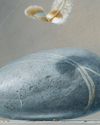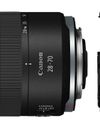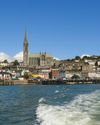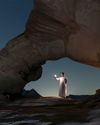
I started taking my own photos three years ago, when I was 21. I had graduated college with my Associate of Arts degree and didn’t have a job, but I really wanted to be a model. I couldn’t afford a photographer to help me build up my portfolio, but, undeterred, I began shooting self-portraits.
I mainly shoot in my parent’s spare bedroom, adding different backgrounds and fabrics to get fresh and exciting looks, but I do shoot in other rooms and outside occasionally too, to give my portraits variety.
Over the years I’ve made my DIY sets more elaborate and intricate but my budgets are always very tight, so that’s where I have to be a bit creative to make $50 look like a million! This can be done with clever lighting, creative camera angles, props, smoke, water and clothing.
I find my inspiration first, whether it’s through Pinterest, a movie, editorials, or God sending me an idea while I’m taking my morning drive.
When an idea does come to mind I’ll sit on it for a few days and really think it through before I even start to build the set, which can take another two or three days to build.
I take great pride in being able to create these portraits with next to zero budget and with basic camera equipment – this allows me to focus more on the modelling and posing.
Instagram has been a fantastic way to get my pictures seen and I love that I’m able to inspire others to create great portraits at home without expensive kit too.
Esta historia es de la edición August 2020 de PhotoPlus : The Canon Magazine.
Comience su prueba gratuita de Magzter GOLD de 7 días para acceder a miles de historias premium seleccionadas y a más de 9,000 revistas y periódicos.
Ya eres suscriptor ? Conectar
Esta historia es de la edición August 2020 de PhotoPlus : The Canon Magazine.
Comience su prueba gratuita de Magzter GOLD de 7 días para acceder a miles de historias premium seleccionadas y a más de 9,000 revistas y periódicos.
Ya eres suscriptor? Conectar

The Art of Copying Art - James Paterson shows you how to use your Canon gear to capture artwork and paintings the right way with simple camera and lighting skills
Whether you want to capture a painting like the above, digitise old prints or reproduce any kind of canvas, there's real skill in capturing artwork with your camera. Not only do you need the colours to be accurate, you also need to master the spread, angle and quality of the light to minimise glare and show the work at its best.This painting by the artist Bryan Hanlon has a wonderfully subtle colour palette. To reproduce the painting in print and digital form, it needs to be captured in the right way.

Fright night
Canon photographer and digital artist Alexander loves to craft incredible fantasy scenes with a spooky horror twist

Sharpen your shots with DPP
Sharpening a digital image also increases contrast at the edge of details

CANON ImagePrograf PRO-1100
Deeper blacks, better bronzing, greater lifespan and 5G Wi-Fi -Canon's new printer is full of new tech, says

Canon's new 'kit lens' is actually a half-price f/2.8 trinity lens!
The Canon RF 28-70mm F2.8 IS STM lacks a red ring, but borrows premium features from its L-series siblings

DREW GIBSON
Pro motorsports photographer Drew on why he hasn't (yet) switched to Canon's mirrorless system, why old-school techniques can be the most reliable, and the lessons learned from more than a decade shooting the world's biggest car brands

Up in smoke
Make a smoky shape in Affinity Photo and get to grips with the amazing Liquify Persona under the guidance of James Paterson

Expand your creativity with Generative Fill
Photoshop's Al-powered feature brings revolutionary new tools to image editing. James Paterson reveals all...

Turn your images into vintage postcards
Wish you were here? Sean McCormack explains how you can give your summer photographs a vintage postcard look

The Angel Malibu
Light painting an American movie producer in the Wadi Rum Desert in Jordan was a highly unlikely evening out for David!